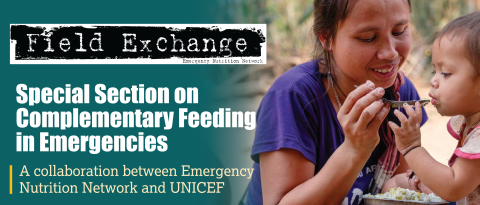Wasting and Stunting Technical Interest Group: two new publications from the research-influencing sub-working group
The research-influencing sub-working group of the Wasting and Stunting Technical Interest Group (WaSt-TIG) has recently published two papers aimed at researchers working in this field.
The first is a peer-reviewed perspectives piece published in the Journal of Nutrition (Sadler et al, 2022). This summarises the learnings from the Wasting and Stunting Project to date – a project that aimed to better understand the complex relationship between wasting and stunting and examine whether current separations that were apparent in approaches to policy, financing, and programmes were justified or useful. The article brings a wasting and stunting lens to how research is designed and financed for the nutrition community to better understand, prevent, and treat child undernutrition.
The authors discuss key lessons learned, focusing on the synergy and temporal relationships between children's weight loss and linear growth faltering, the various factors that drive diverse forms of undernutrition, and how to best identify and target those most at risk. They conclude that supporting progress in all these areas requires research collaborations that highlight the value of research that moves beyond a focus on single forms of undernutrition and ensures that equal attention is given to wasting compared to other forms of malnutrition.
The second paper is a technical brief exploring research methods for studies looking at the relationship between wasting and stunting (James & Khara, 2022).
The brief aims to share the extensive experience of the WaSt-TIG in scrutinising this relationship with the aim of inspiring and facilitating others to do the same. Data used by the group includes multiple datasets drawn from diverse settings, collected using a variety of objectives and methodologies. The lessons learned may help researchers and programmers involved in similar research and they are relevant not only for the design and planning of new studies but also for the analysis of existing datasets through the lens of wasting and stunting. The authors start with an overview of the main characteristics of cross-sectional and longitudinal data and how these different types of data have been used by the WaSt-TIG. In doing so, they set out some of the strengths and limitations of both, discussing which research questions lend themselves to each type of data.
The second part of the brief then summarises some of the best practices that arose from the collective experience of the WaSt-TIG, focusing on the choice of outcomes and exposures, the consideration of seasonality, the duration of the studies, the frequency of data collection, pooling datasets, and data cleaning. The brief finishes with reflections on systematic reviews and provides short concluding remarks.
References
James P and Khara T (2022) Research methods for studies looking at the relationship between wasting and stunting. https://www.ennonline.net/wast-tigtechnicalbriefingpaper2022
Sadler K, James P, Bhutta Z et al (2022) How can nutrition research better reflect the relationship between wasting and stunting in children? Learnings from the wasting and stunting project. The Journal of Nutrition. https://academic.oup.com/jn/advance-article/doi/10.1093/jn/nxac091/6605596


